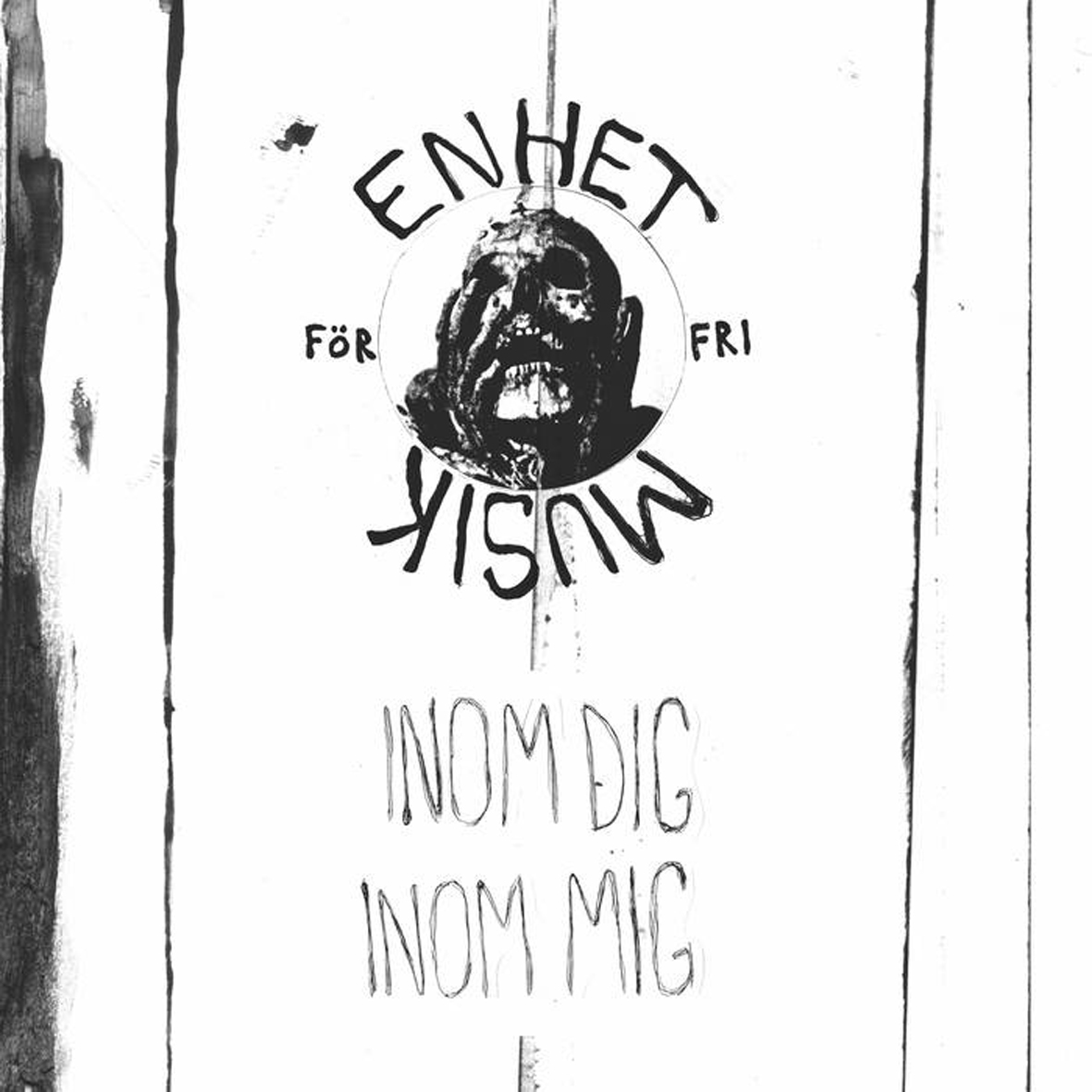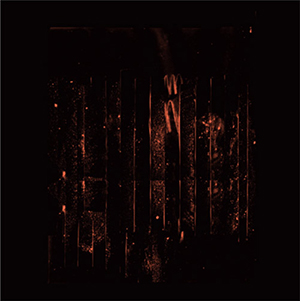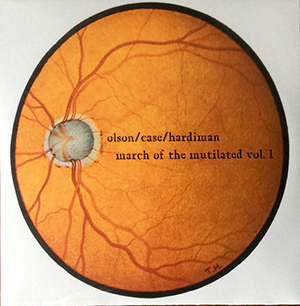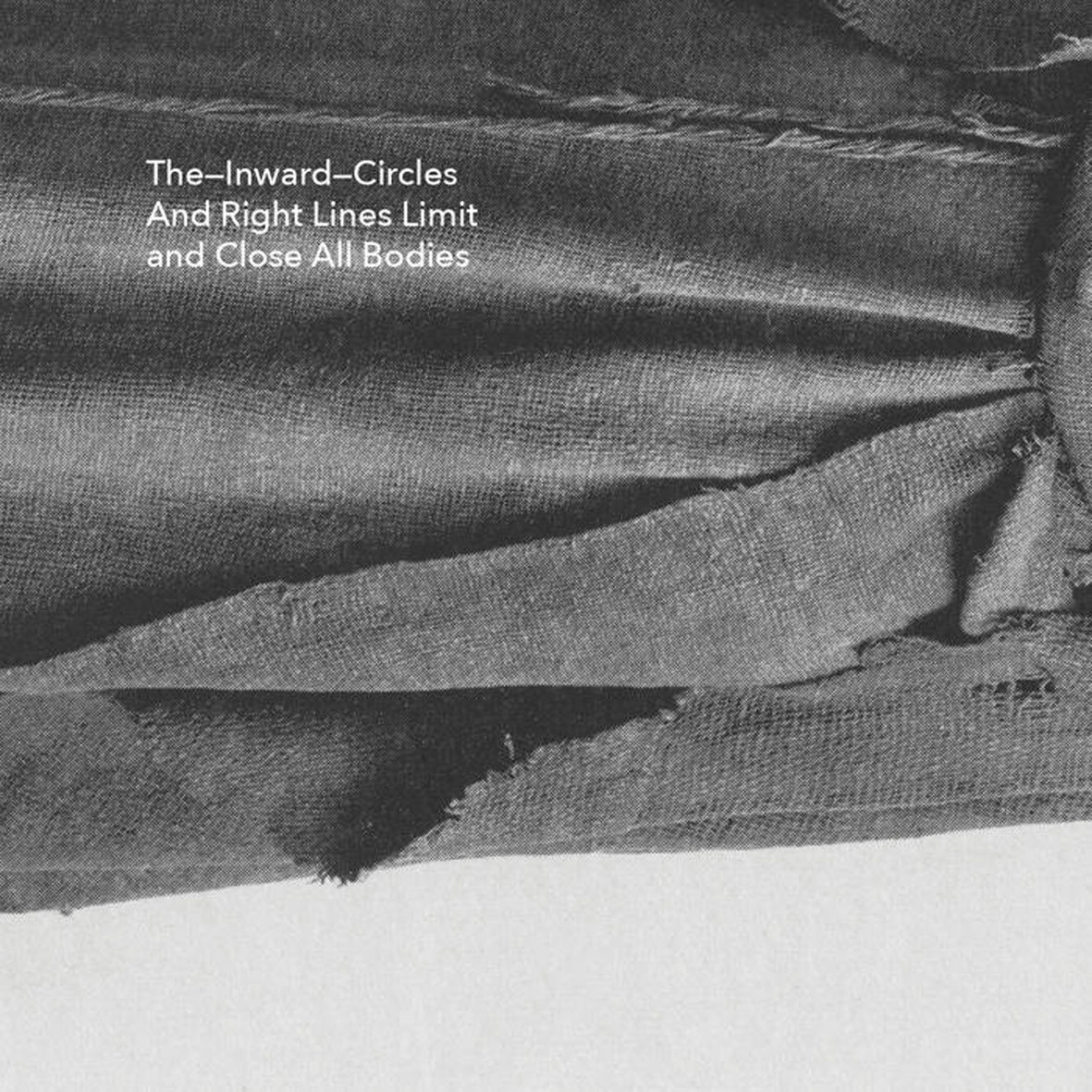 Belgium’s Aguirre Records seems to have quite a talent for digging up some singularly obscure, weird, and surprising releases lately.  The latest one to knock me sideways is this one, a free-folk project that seemingly involves most of the Swedish underground. Ostensibly formed to reignite and continue the tradition of communal psych genius of heavyweights like Pärson Sound, Enhet För Fri Muzik made a rather intriguing detour along the way and wound up deep in idiosyncratic and otherworldly "outsider folk" territory instead.  Even that is a bit of an oversimplification though, as Sofie Herner's alternately fragile, distracted, ritualistic, and trance-like vocals are unpredictably accompanied with everything from saxophones to field recordings of birds and streams.  Admittedly, tight songcraft was clearly not a big priority during these sessions, but Inom Dig casts an absorbing spell of timeless unreality that transcends mere melodies and hooks.
Belgium’s Aguirre Records seems to have quite a talent for digging up some singularly obscure, weird, and surprising releases lately.  The latest one to knock me sideways is this one, a free-folk project that seemingly involves most of the Swedish underground. Ostensibly formed to reignite and continue the tradition of communal psych genius of heavyweights like Pärson Sound, Enhet För Fri Muzik made a rather intriguing detour along the way and wound up deep in idiosyncratic and otherworldly "outsider folk" territory instead.  Even that is a bit of an oversimplification though, as Sofie Herner's alternately fragile, distracted, ritualistic, and trance-like vocals are unpredictably accompanied with everything from saxophones to field recordings of birds and streams.  Admittedly, tight songcraft was clearly not a big priority during these sessions, but Inom Dig casts an absorbing spell of timeless unreality that transcends mere melodies and hooks.
Look up Music for gazing upwards brought to you by Meat Beat Manifesto & scott crow, +/-, Aurora Borealis, The Veldt, Not Waving & Romance, W.A.T., The Handover, Abul Mogard & Rafael Anton Irisarri, Mulatu Astatke, Paul St. Hilaire & René Löwe, Songs: Ohia, and Shellac. Aurora Borealis image from California by Steve. Get involved: subscribe, review, rate, share with your friends, send images! |



 I have been on an extended Croatian Amor bender since last year's Love Means Taking Action, so I was delighted when I found out that Loke Rahbek was releasing his first solo album under his own name on Editions Mego.  Unsurprisingly, City of Women does not sound much like Croatian Amor at all, as Rahbek has been involved in at least a dozen other projects.  In fact, this release is billed as sort of a culminating convergence of Rahbek's varied and prolific history of underground music projects, though it is not nearly the radical compositional leap forward one might expect from that statement.  Instead, City of Women is a lot like a well-produced Loke Rahbek buffet that offers discrete forays into the many facets of his artistry (noise, dense synth soundscapes, sound collage, and even an occasional piano miniature) rather than a thematically consistent major work.  Several of the piece are quite good, naturally, but expectations should be moderated: this is only another characteristically fine Rahbek release rather than the beginning of a bold new chapter.
I have been on an extended Croatian Amor bender since last year's Love Means Taking Action, so I was delighted when I found out that Loke Rahbek was releasing his first solo album under his own name on Editions Mego.  Unsurprisingly, City of Women does not sound much like Croatian Amor at all, as Rahbek has been involved in at least a dozen other projects.  In fact, this release is billed as sort of a culminating convergence of Rahbek's varied and prolific history of underground music projects, though it is not nearly the radical compositional leap forward one might expect from that statement.  Instead, City of Women is a lot like a well-produced Loke Rahbek buffet that offers discrete forays into the many facets of his artistry (noise, dense synth soundscapes, sound collage, and even an occasional piano miniature) rather than a thematically consistent major work.  Several of the piece are quite good, naturally, but expectations should be moderated: this is only another characteristically fine Rahbek release rather than the beginning of a bold new chapter. Locrian is still an active band, but vocalist/keyboardist Terence Hannum has added another side project to his roster: The Holy Circle. Featuring his wife Erica Burgner-Hannum on vocals and Nathan Jurgenson (Screen Vinyl Image) on drums, the project could not be more different than his other recent one, the anti-fascist Axebreaker (
Locrian is still an active band, but vocalist/keyboardist Terence Hannum has added another side project to his roster: The Holy Circle. Featuring his wife Erica Burgner-Hannum on vocals and Nathan Jurgenson (Screen Vinyl Image) on drums, the project could not be more different than his other recent one, the anti-fascist Axebreaker ( Crouch's last release, A Gradual Accumulation of Ideas Becomes Truth (Line), was a heavily conceptual work touching on location and memory that, even divorced from its intellectual underpinning, was an excellent piece of sound art. Sublunar may not be as steeped in concept, but again the audio (a live performance mixing existing material and field recordings) is the most important facet, and again he excels in creating a disorienting piece of familiar and unfamiliar sounds that blur together wonderfully.
Crouch's last release, A Gradual Accumulation of Ideas Becomes Truth (Line), was a heavily conceptual work touching on location and memory that, even divorced from its intellectual underpinning, was an excellent piece of sound art. Sublunar may not be as steeped in concept, but again the audio (a live performance mixing existing material and field recordings) is the most important facet, and again he excels in creating a disorienting piece of familiar and unfamiliar sounds that blur together wonderfully. This split tape manages to capture what sounds like the final Ars Phonenix release (though vocalist/guitarist/keyboardist Jon Glover and keyboardist/vocalist Caitlyn Grimalkin are continuing as Pass/Ages), and one of only a handful of works by Adam Batley's Viirus project. Besides both hailing from the wild lands of Florida (not what I would consider a hotbed for electronic music), they also share the commonality of creating skeletal, yet catchy and moody electronic pop, making for an exceptional pairing.
This split tape manages to capture what sounds like the final Ars Phonenix release (though vocalist/guitarist/keyboardist Jon Glover and keyboardist/vocalist Caitlyn Grimalkin are continuing as Pass/Ages), and one of only a handful of works by Adam Batley's Viirus project. Besides both hailing from the wild lands of Florida (not what I would consider a hotbed for electronic music), they also share the commonality of creating skeletal, yet catchy and moody electronic pop, making for an exceptional pairing. Thalassa is the new collaborative project between two titans of the metal tinged avant garde world of guitar: Aaron Turner (Isis, Mamiffer) and William Fowler Collins. Mythical and elemental imagery abounds on the four lengthy pieces split across two LPs, no doubt informed by the contrast of their respective homes: Turner’s cold and damp Pacific Northwest versus Collins’ arid New Mexico home, but the two are entirely on the same page when it comes to performance. Equally fitting into the worlds of old school ambient composition and metallic darkness, Bonds of Prosperity is as bleak as it is engaging.
Thalassa is the new collaborative project between two titans of the metal tinged avant garde world of guitar: Aaron Turner (Isis, Mamiffer) and William Fowler Collins. Mythical and elemental imagery abounds on the four lengthy pieces split across two LPs, no doubt informed by the contrast of their respective homes: Turner’s cold and damp Pacific Northwest versus Collins’ arid New Mexico home, but the two are entirely on the same page when it comes to performance. Equally fitting into the worlds of old school ambient composition and metallic darkness, Bonds of Prosperity is as bleak as it is engaging. Spurred on by an open Facebook post during one of John Olson’s (Wolf Eyes) visits to Upstate New York, this album features him with two local luminaries, Eric Hardiman (Rambutan, Century Plants) and Jeff Case (Burnt Hills) in a purely improvised setting. These three lengthy performances are surprisingly restrained, with Olson exclusively on reeds and wind instruments, Case on drums and Hardiman on saxophone and synths. I am guessing the result is an excellent example of psycho jazz (still not knowing exactly what that means as a genre), though it is surprisingly more conventional than I had expected.
Spurred on by an open Facebook post during one of John Olson’s (Wolf Eyes) visits to Upstate New York, this album features him with two local luminaries, Eric Hardiman (Rambutan, Century Plants) and Jeff Case (Burnt Hills) in a purely improvised setting. These three lengthy performances are surprisingly restrained, with Olson exclusively on reeds and wind instruments, Case on drums and Hardiman on saxophone and synths. I am guessing the result is an excellent example of psycho jazz (still not knowing exactly what that means as a genre), though it is surprisingly more conventional than I had expected. These two new releases from the legendary composer may have come out around the same time, but they both represent extreme ends of his work. The former is a two disc, 16 piece compilation of shorter works created over the span of two years, covering a wide gamut of the López sound. The latter is a flash drive containing a single work (split into 11 distinct parts) five hours and 20 minutes in length, all based on a single sound source. They may be distinctly different in composition and construction, but both are brilliant works in his already shining discography.
These two new releases from the legendary composer may have come out around the same time, but they both represent extreme ends of his work. The former is a two disc, 16 piece compilation of shorter works created over the span of two years, covering a wide gamut of the López sound. The latter is a flash drive containing a single work (split into 11 distinct parts) five hours and 20 minutes in length, all based on a single sound source. They may be distinctly different in composition and construction, but both are brilliant works in his already shining discography. Luke Younger’s latest EP draws inspiration from his fascination with the UK's media chaos surrounding last year’s Brexit vote.  I suppose that is arguably one good thing to come out of that dark bit of recent history, but Helm already seemed to be doing a perfectly fine job producing fine albums without that unfortunate muse.  Inspirations aside, Helm EPs generally tend to feel a hell of a lot like maxi-singles and they only surface when Younger has made a significant creative breakthrough.  World in Action is no exception to that trend.  In this case, that breakthrough takes the form of the 9-minute "Blue Scene," a gloriously skittering and jazz-damaged cacophony that often resembles a hallucinatory flock of worried geese...with a groove.  Naturally, the remaining three pieces adhere to characteristically Helm-esque levels of quality, but it is quite clear that the wildly skwonking, must-hear tour de force of "Blue Scene" is the reason that this release exists.
Luke Younger’s latest EP draws inspiration from his fascination with the UK's media chaos surrounding last year’s Brexit vote.  I suppose that is arguably one good thing to come out of that dark bit of recent history, but Helm already seemed to be doing a perfectly fine job producing fine albums without that unfortunate muse.  Inspirations aside, Helm EPs generally tend to feel a hell of a lot like maxi-singles and they only surface when Younger has made a significant creative breakthrough.  World in Action is no exception to that trend.  In this case, that breakthrough takes the form of the 9-minute "Blue Scene," a gloriously skittering and jazz-damaged cacophony that often resembles a hallucinatory flock of worried geese...with a groove.  Naturally, the remaining three pieces adhere to characteristically Helm-esque levels of quality, but it is quite clear that the wildly skwonking, must-hear tour de force of "Blue Scene" is the reason that this release exists. As a longtime Richard Skelton fan, I have been watching his recent trajectory with quite a bit of fascination, as he has been restlessly diving into increasingly varied and arcane territory while distancing himself further and further from his brilliant earlier work with each new release.  While there are still some lingering vestiges of that vibrantly harmonic-strewn string work in his *AR project with Autumn Richardson, Skelton's solo work as The Inward Circles is explicitly (and increasingly) intent on exploring an aesthetic of "burial, obfuscation and mythologization."  In fact, The Inward Circles often seems like a rather perverse name, as Skelton has seemingly ceased burrowing inwards and thrown himself into the epic, timeless, and vast. At times, that newly cosmic scope falls uncomfortably close to dark ambient (a genre that I am generally quite happy to avoid), but it can sometimes yield absolutely crushing and awe-inspiring results as well (Nimrod is Lost).  This latest opus does not quite sustain the lofty heights of some previous Inward Circles classics, but it compensates with a slow-burning majesty that builds to a sustained and wonderful crescendo.
As a longtime Richard Skelton fan, I have been watching his recent trajectory with quite a bit of fascination, as he has been restlessly diving into increasingly varied and arcane territory while distancing himself further and further from his brilliant earlier work with each new release.  While there are still some lingering vestiges of that vibrantly harmonic-strewn string work in his *AR project with Autumn Richardson, Skelton's solo work as The Inward Circles is explicitly (and increasingly) intent on exploring an aesthetic of "burial, obfuscation and mythologization."  In fact, The Inward Circles often seems like a rather perverse name, as Skelton has seemingly ceased burrowing inwards and thrown himself into the epic, timeless, and vast. At times, that newly cosmic scope falls uncomfortably close to dark ambient (a genre that I am generally quite happy to avoid), but it can sometimes yield absolutely crushing and awe-inspiring results as well (Nimrod is Lost).  This latest opus does not quite sustain the lofty heights of some previous Inward Circles classics, but it compensates with a slow-burning majesty that builds to a sustained and wonderful crescendo.
